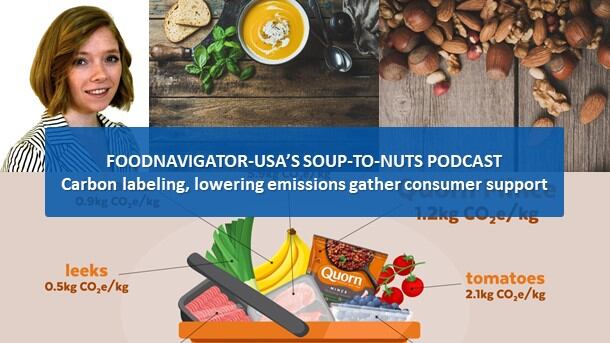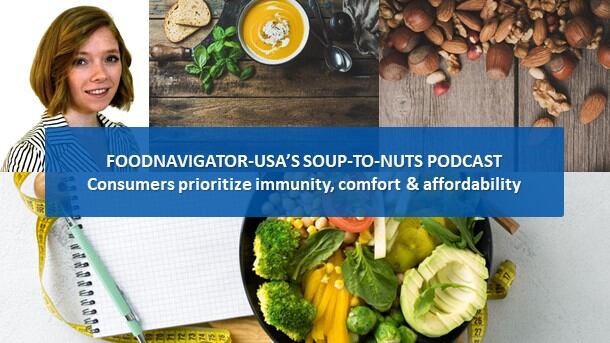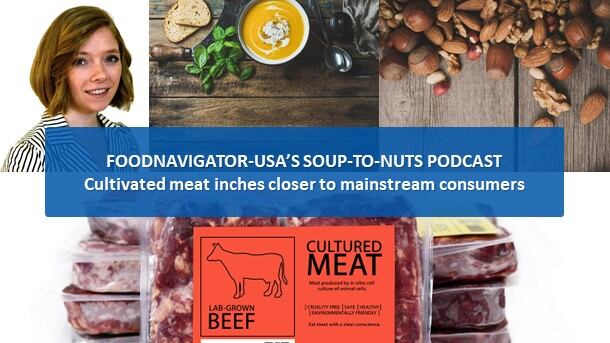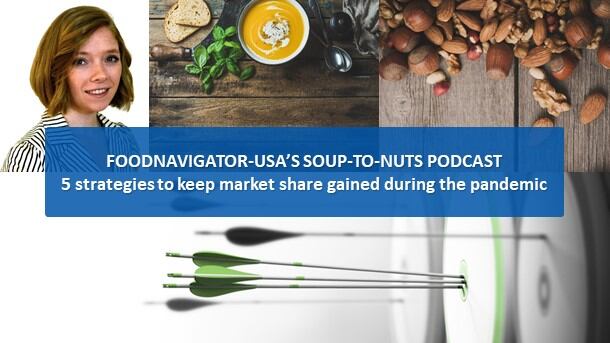Currently only a handful of companies disclose on packaging the total amount of carbon produced during the manufacturing, distribution, use and disposal of food products, but many more see the writing on the wall and are developing rating and labeling programs to inform consumers about their products’ environmental impact.
For example, Unilever announced last July that it will include on labeling for all its products their carbon footprint, the plant-based meat company Quorn last year began displaying carbon information on labels for its most popular products and other companies, including Nestle are considering similar initiatives.
In addition, companies including Danone, General Mills, Nestle, Sodexo and PepsiCo all have pledged to reduce emissions to keep global warming to 1.5 degrees Celsius, and to comply they will need to determine the carbon footprint of their products, which some may opt to highlight in marketing and labeling.
But carbon labeling might not make sense for every brand or product, and companies will need to weigh such a project against other environmental, social and governance issues to determine their best priorities. In this episode of FoodNavigator-USA’s Soup-To-Nuts podcast, Bruce Silverglade, a principal at OFW Law, and Brian Choi, the CEO of The Food Institute, shine a light on the evolution of the carbon labeling trend, its potential business impact, the legal risks and best practices for moving forward.
[Editor’s Note: Never miss another episode of FoodNavigator-USA’s Soup-To-Nuts podcast – subscribe today.]
The evolution of carbon labeling
Consumer interest in the impact of food on their bodies and the planet has been rising in recent years, but in several ways the pandemic accelerated these trends as consumers gravitated towards contactless delivery of groceries, meal kits and take-out food – all of which increased the amount of waste, packaging and emissions they produced.
This concern isn’t likely to ebb once economies reopen and consumers return to the pre-pandemic shopping habits. Rather, Choi said he expects it to intensify – especially as younger Gen Z shoppers come into the prime of their spending and gain influence over companies and older generations.
“A lot of the adoption when it comes to the consumer perspective comes from the younger, I would say, Millennial and Gen Z generations. They’re on social media. They’re constantly on their phones. And a lot of the attitudes are changing because they start following influencers,” he explained.
As more consumers become interested, more companies are speaking about their efforts to their larger consumer bases – further magnifying the trend, he added.
“So the consumer is at a level now where they … will buy products and food products from companies that share the same values they have,” and this is further changing the way companies think about ESG, he added. “When I starts to hit the bottom line, companies start to take notice and notice very quickly and make the changes very quickly.”
Choi also notes that companies are facing mounting pressure from the government, investors and financial institutions to account for and reduce the environmental impact of their products. And failure to meet even basic ESG benchmarks could hinder the ability to access grants or borrow money at lower rates.
“So, you’re getting git at all levels. And companies need to really wake up and think long and hard about the issue,” which is here now – not coming in five or 10 years, Choi added.
Will industry’s second push on carbon labeling be more successful than the first?
Some long-time players in the industry may recall a previous attempt to adopt carbon labeling as a way to curry favor with consumers while simultaneously pressuring competitors to follow suit for the collective good. While that attempt quickly fizzled, Silverglade suggests this one is more likely to have sticking power because many of the barriers that hindered the movement before have been lowered or removed.
For example, he noted that when carbon labeling first popped up in 2010 there wasn’t a standardized way of measuring or reporting the data – making it difficult for consumers to understand and base their purchases decisions. But now, there are several certifying organizations, including The Carbon Trust and the World Resources Institute, that have standardized emissions calculations so they are more reliable for consumers.
However, Silverglade, added, the government has not endorsed any scheme, which means there is still a “bit of a drag on the popularity of this type of approach to marketing.”
For companies that are hesitant to rely on third-party certifiers for protection against claims litigation or class action suits, Silverglade recommends they follow the Federal Trade Commission’s Green Guides when crafting carbon labels and corresponding marketing.
“There are ways to mitigate risks when making a carbon equivalent claim, although there are no set federal standards. We can look at several parallel standards developed, particularly by the Federal Trade Commission for environmental claims that I believe if companies follow, they will be in a safe territory in terms of making these types of label statements,” Silverglade explained.
Carbon labeling isn’t for everyone
Despite mounting pressure to adopt carbon labeling, Silverglade notes it is not going to be for everyone. He also emphasizes it is not an all or nothing gambit, but rather companies can determine if or how they want to evaluate their carbon footprint and then if or how much they want to share with consumers and other industry players.
“The first step for a company is to do a general assessment of whether carbon labeling has a place in the company’s mission and marketing plans. Carbon labeling is not going to be right for every company. If you have a product line that consistently produces a high CO2 equivalent grade, its not gong to do much for marketing,” he noted.
Nonetheless, companies should still consider measuring their carbon emissions, so they understand the impact of their products, he added. They can use this information to develop a sustainability plan or to guide investments in innovation or marketing.
Silverglade also noted that while some companies, like Unilever, have committed to providing carbon labeling for all 70,000 of its products, others are providing the information for just a handful of items, which is a less intensive undertaking and more practical for some companies.
Either way, he added, “carbon labeling is a growing trend that fits the product lines of numerous companies that produce products that will have a low carbon dioxide equivalent number. And its something that we feel is not going to go away, but it should be considered in the mix of labeling food as organic, Fair Trade, Fair Labor and so forth.”
Next steps
Silverglade recommends companies that are interested in learning more about carbon labeling should look at standards developed by the Carbon Trust and the World Resources Institute, which has spearheaded a movement to put climate-friendly, or “cool” foods on menus.
They also can watch on demand a webinar Silverglade produced with The Food Institute that ran earlier this month.
In addition, Choi encourages interested firms to tune-in for a free webinar hosted by The Food Institute Feb. 25 at 2 EST titled ESG Best Practices for the Food Industry, and keep and eye open for other upcoming webinars that will break down each different aspects of the evolving environmental, social and governance responsibilities that consumers value and base purchase decisions.




